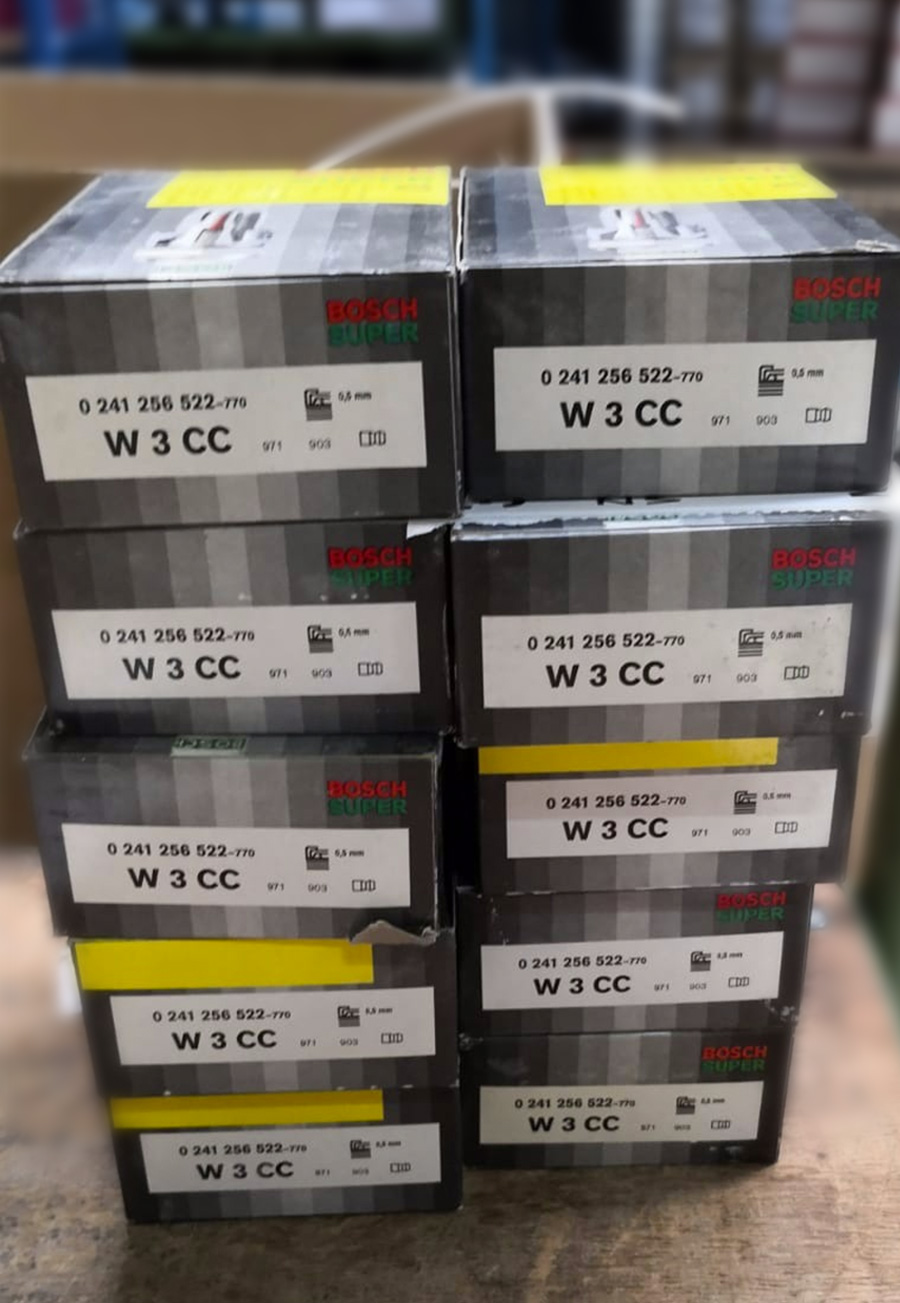Bosch W3 CC - Production Discontinued
Bosch has discontinued the production of the popular spark plug
W3 CC. We have acquired the last remaining stock to supply you for as long as possible.
Sad Alternatives
Now you might think: "So what? I'll just use an alternative spark plug, like
NGK B8ES or a
Denso W24 ESU or even a Champion N3C!" You wouldn't be entirely wrong; these spark plugs have the same heat range! Still, we're feeling sentimental, we grew up with the "W3CC." This spark plug passed through our counter thousands of times, and we screwed it into many cylinder heads. We're definitely keeping a few aside. Are you too?

| Bosch W3 CC Spark Plug |
| Thread Type: |
M14x1.25 |
| Spark Plug Thread Length: |
19 mm |
| Spark Plug Thread: |
Long |
| Wrench Size: |
21 mm |
| Electrode Material: |
Nickel |
| Electrode Type: |
Standard |
| Spark Plug with Cap (Thread Protection): |
Yes |
| Cap (Thread Protection) is Screwed On: |
Yes |
| Heat Range NGK: |
B8ES |
| Heat Range Denso: |
W24ESU |
| Heat Range Champion: |
N3C |
The Spark Plug Explained
Spark Plug Thread Diameter
Common thread sizes are M10, M12, and M14. Classic vehicles usually have an M14 thread. 4-stroke engines and modern 2-stroke engines with fuel injection use the smaller spark plugs with M10 or M12 threads.
Spark Plug Thread Length
Common thread lengths are 19mm (long thread) and 12.7mm (short thread).
Heat Range of the Spark Plug
The heat range is crucial for the thermal durability of the spark plug and its self-cleaning effect. There is a distinction between cold and hot spark plugs. A cold spark plug is used for engines that develop very high combustion chamber temperatures, typically found in engines with high power for their displacement. A hot spark plug, on the other hand, is used in lightly loaded stock engines. This type of plug quickly reaches a high temperature, which helps burn off any soot on the plug. Temperature resistance is achieved through differently designed insulators. A cold plug can transfer a lot of heat through the cylinder head, while a hot plug strongly limits this transfer. The heat range is not related to the strength or performance of a spark plug. A cold plug in a cold (weak) engine can get fouled with oil or soot and might fail without damaging the engine itself. A hot spark plug in a racing engine may overheat and severely damage the engine. The heat range of a spark plug is not standardized. Each manufacturer has its own code.
- NGK from cold to hot = 10-9-8-7-6
- Bosch from cold to hot = 2-3-4-5-6
- DENSO from cold to hot = 37-34-31-27-24-22-20-16-14
-

Electrode Material
Materials such as copper, platinum, silver, or even iridium are used. Copper is the most common, followed by silver and platinum. Due to the high prices of precious metals, spark plugs made from these materials are more expensive than their copper counterparts. The material mainly affects wear, with the extremely thin iridium electrodes (Ø=0.6mm) offering a higher ignition voltage, improving the flame front propagation in the combustion chamber.


